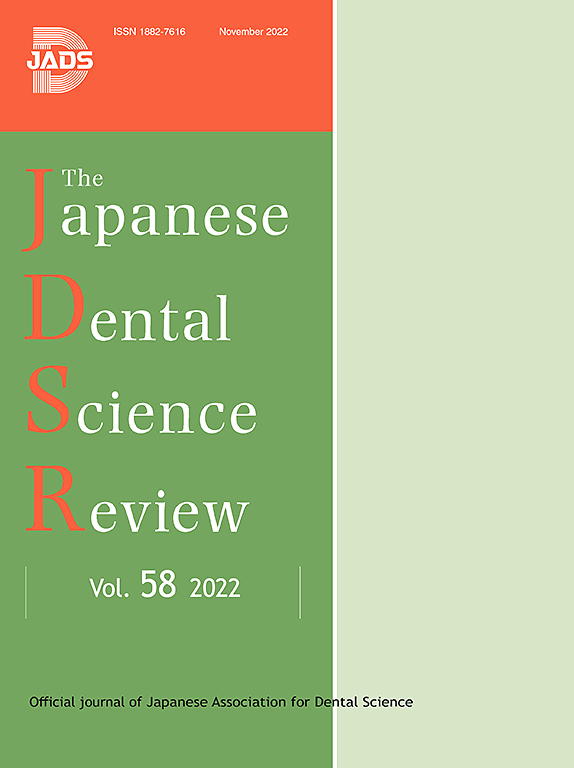纤维素纳米纤维在牙科应用中的应用:体外证据的系统综述
IF 6.6
2区 医学
Q1 DENTISTRY, ORAL SURGERY & MEDICINE
引用次数: 0
摘要
本系统综述旨在确定纤维素纳米纤维(CNF)如何增强牙科材料的机械性能、生物相容性和功能通用性,基于体外证据。根据PRISMA 2020制定了系统审查方案。文献检索使用MEDLINE/PubMed、Scopus、Web of Science、Scopus和Embase对无日期限制的英文出版物进行检索,共检索到180篇出版物。去除重复项后,剩下150项,其中23项被完全评估。17项体外研究符合纳入标准,其中13项为低偏倚风险,4项为中等偏倚风险,无高风险。在所有包括的研究中,CNF持续改善机械性能,特别是弯曲和抗压强度,同时保持或增强各种细胞培养模型的生物相容性。CNF的纳米纤维结构和可修饰的表面化学也扩展了其功能的多功能性,使其能够应用于药物封装和靶向抗菌药物输送等领域。总的来说,CNF作为一种有前途的现代牙科生物材料,提供优越的机械加固,有利的细胞反应和广泛的功能修饰。进一步的体内研究和临床试验是必要的,以确认其长期安全性和有效性,从而促进这些体外研究结果转化为标准的牙科实践。本文章由计算机程序翻译,如有差异,请以英文原文为准。
Utilization of cellulose nanofiber in dental applications: A systematic review of in vitro evidence
This systematic review aimed to determine how cellulose nanofiber (CNF) enhance the mechanical properties, biocompatibility, and functional versatility of dental materials, based on in vitro evidence. A systematic review protocol was developed according to PRISMA 2020. The literature search was conducted using MEDLINE/PubMed, Scopus, Web of Science, Scopus, and Embase for English-language publications with no date restrictions, yielding 180 publications. After removing duplicates, 150 remained, from which 23 were evaluated in full. 17 in vitro studies met the inclusion criteria, of which 13 had a low risk of bias, 4 had a moderate risk, and none had a high risk. Across all included investigations, CNF consistently improved mechanical performance, particularly flexural and compressive strength, while maintaining or enhancing biocompatibility in various cell culture models. CNF’s nanofibrillar structure and modifiable surface chemistry also expanded its functional versatility, enabling applications such as drug encapsulation and targeted antimicrobial delivery. Overall, CNF emerges as a promising biomaterial for modern dentistry, offering superior mechanical reinforcement, favorable cell responses, and wide-ranging functional modifications. Further in vivo research and clinical trials are necessary to confirm its long-term safety and efficacy, thereby facilitating the translation of these in vitro findings into standard dental practice.
求助全文
通过发布文献求助,成功后即可免费获取论文全文。
去求助
来源期刊

Japanese Dental Science Review
DENTISTRY, ORAL SURGERY & MEDICINE-
CiteScore
9.90
自引率
1.50%
发文量
31
审稿时长
32 days
期刊介绍:
The Japanese Dental Science Review is published by the Japanese Association for Dental Science aiming to introduce the modern aspects of the dental basic and clinical sciences in Japan, and to share and discuss the update information with foreign researchers and dentists for further development of dentistry. In principle, papers are written and submitted on the invitation of one of the Editors, although the Editors would be glad to receive suggestions. Proposals for review articles should be sent by the authors to one of the Editors by e-mail. All submitted papers are subject to the peer- refereeing process.
 求助内容:
求助内容: 应助结果提醒方式:
应助结果提醒方式:


